The old-fashioned flowers you may recall seeing in your grandmother’s garden are back in vogue. Before, the only way to get some of these plants was to grow them from slips or seed, now they’re available from nurseries in new and exciting colours
CORAL BUSH OR FIRECRACKER PLANT (RUSSELIA EQUISETIFORMIS)
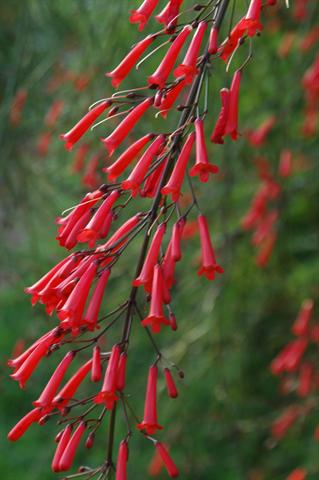
Face value: Easy and quick to grow, this rewarding metre-high shrub blooms from spring to late autumn. Its tubular, coral-coloured flowers dangle from cascading, wiry, reed-like stems and are a magnet for nectar-eating birds.
Planting pointers: Half hardy, it prefers a warm, sunny to semi-shady position. A good container or waterside plant, the reed-like foliage provides a good contrast to plants with more substantial leaves.
Growing tips: Tidy it up in spring by removing the older stems at the base.
SHRIMP PLANT (JUSTICIA BRANDEGEANA SYN. BELOPERONE GUTTATA)
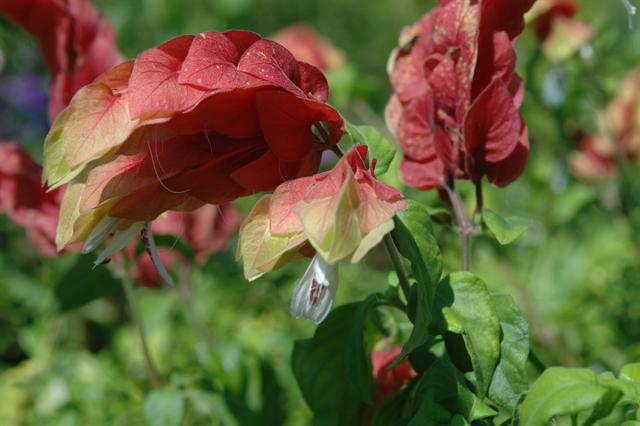
Face value: This subshrub boasts showy, overlapping salmon-pink bracts that look like shrimps. Reaching 90–150cm high, it flowers from spring to summer and right through winter in warm regions.
What’s new? Justicia ‘Chartreuse’ (below) which has attractive lime-yellow flowers.
Planting pointers: Shrimp plants do best in subtropical and coastal regions in a sunny spot, but need to be protected from the hot midday sun. Provide a sheltered position in colder regions as they dislike frost. They’re perfect for pots on patios or as fillers in the shrubbery where they can be teamed with mimulus (see overleaf) and the marmalade bush, which have similar colouring, or pentas and hebes.
Growing tips: You may need to support the stems when they’re weighted down by the flower heads. Prune in spring to encourage bushy growth. Grow them from slips taken in spring and autumn.
ZINNIAS
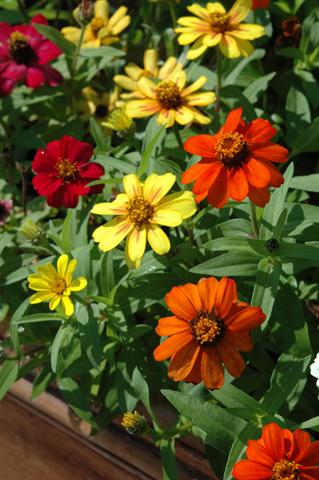
Face value: From dwarf plants with dainty flowers to giants that grow 50cm high, these beauties are available in a range of forms and colours. Summer-flowering, their daisy-like blooms, which can be singles, doubles, ‘buttons’ or dahlia-like, attract butterflies. Look out for ‘Strawberry’ (below) which has gorgeous deep magenta flowers.
What’s new? Doubles are a welcome addition to the popular, large flowered Zahara series. Reaching 40–50cm high, they’re mildew resistant, have low water needs and flower prolifically.
Planting pointers: Annuals, which have adapted to high temperatures, they’re relatively drought tolerant, need lots of sun and good air circulation so avoid overcrowding them. Use the taller varieties at the back of the border and group the smaller varieties in hot sunny beds with other heat- and drought-tolerant annuals like vinca, verbena and portulaca. Mix the dwarf ‘Sunbow’ with the cactus-flowered ‘Dark Jewel’.
Growing tips: The seeds need heat for optimum germination so sow them in late spring and summer. Deadhead your plants regularly for continuous flowering. If possible, water from below so the foliage stays dry; if powdery mildew is a problem, select resistant varieties.
CONE FLOWER OR PINK RUDBECKIA (ECHINACEA PURPUREA)
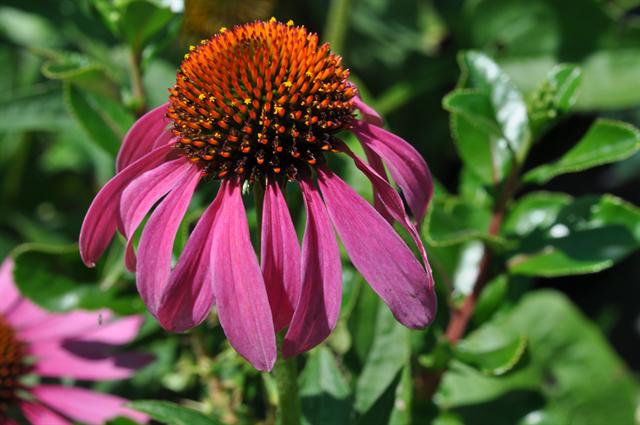
Face value: Bees and butterflies adore the flowers of this attractive perennial which has pink, cream or yellow ray petals, surrounding unusual, raised, spiky, gold and mahogany-coloured cones; these remain long after their summer flowering season, adding interest to the autumn garden.
What’s new? You’ll love the rich shades of red, orange, purple, scarlet, cream, yellow and white of Echinacea ‘Cheyenne’ (below) which produces well-branched flower stems that grow 50–75cm high.
Planting pointers: This water-wise plant can withstand heat and humidity. Although it tolerates poor soils, it does best in deep, well-drained soil in full sun. As it has several medicinal uses and makes a great cut flower, it’s a welcome addition to the herb or cutting garden and also looks good with wild flower plants like gaura and grasses.
Growing tips: Sow the seed in spring. Large clumps can be divided every 3–4 years in spring. It dies back in winter so remember to mark its position. Deadhead to prolong the flowering season.
HOLLYHOCKS (ALCEA ROSEA)
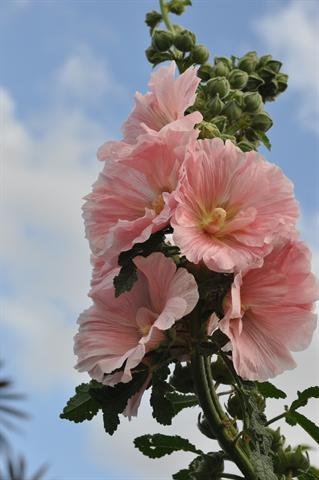
Face value: These towering yet elegant biennials, or short lived perennials, produce leaves the first year and flowers the next. They produce shimmery single or double-petalled flowers from spring to autumn.
What’s new? ‘Charter’s Double’ is a multicoloured mix of fluffy, rosette blooms that grow up to 150cm high. ‘Summer Carnival’ is a colourful blend of single flowers that reach 125cm high.
Planting pointers: A sunny spot with moist, but well-drained, humus-rich soil is best. Right at home in country-style gardens, they’re great for adding height to the mixed border; combine them with perennials like yarrow, lavender and roses. Although they’re half hardy, you’ll need to protect the crowns in frost-prone areas.
Growing tips: Plants sown from seed in autumn will flower the next summer; seed sown in spring will bloom in late summer. Stake them in windy areas. Cut back after the flowers have dropped their seeds. Avoid rust by watering the ground and not the leaves and ensuring there’s good air circulation.
SUNFLOWERS (HELIANTHUS ANNUUS)
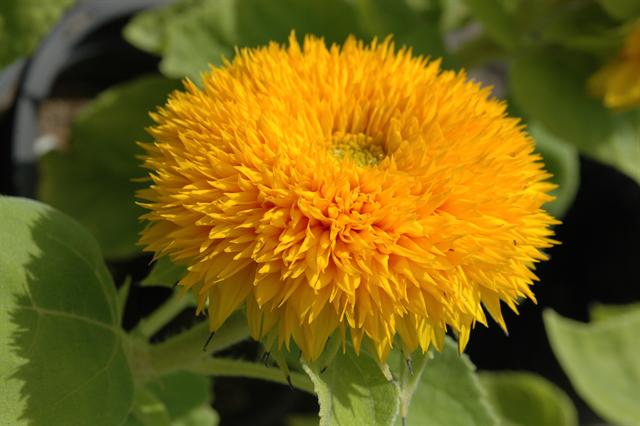
Face value: While traditional sunflowers have a dark central eye with a fringe of yellow petals on top of a tall, single stem, some of the shorter, bushier hybrids are multi-stemmed. Blooming in summer and autumn, ‘Music Box’ is one of our favourite hybrids as its flowers range from burgundy and ruby red to orange, peach, apricot and bright yellow. Frilly ‘Teddy Bear’ (above) is another unusual, eye-catching choice.
What’s new? ‘Miss Sunshine’ (below) grows 30–40cm high, is mildew-tolerant and will flower earlier in the season. It’s ideal as a cut flower as it doesn’t drop pollen and so won’t aggravate your allergies.
Planting pointers: As their name suggests, sunflowers prefer a sunny spot and will thrive in well-drained, loamy soil to which a slow-release, low-nitrogen fertiliser has been added. Frost tender, they make a glorious addition to a Monet-style garden where they’ll add autumnal interest. Varieties suitable for pots include ‘Ballad’, ‘Pacino Gold’ and ‘Sunspot’.
Growing tips: As it’s an annual, sow seeds in the ground in late spring and protect them from birds. To enjoy continuous blooms, especially for the vase, sow further batches every 3–4 weeks. You’ll need to stake tall plants.
MONKEY FLOWER (MIMULUS AURANTIACUS SYN. DIPLACUS GLUTINOSUS)
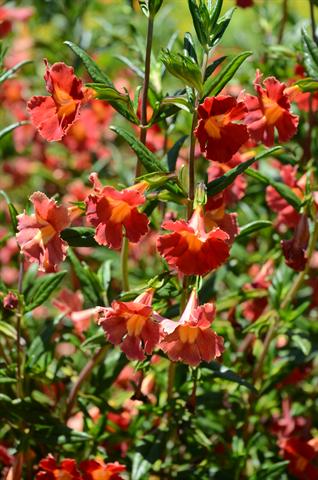
Face value: With sticky leaves and apricot blooms that resemble smiling monkey faces, these shrubby, knee-high perennials are a delight, particularly as they keep flowering from late spring to autumn and even through winter in hot regions.
What’s new? Mimulus ‘Jelly Beans’ (above) is available in diverse colours including maroon, bright yellow, lilac and red-purple with white edges. (Don’t confuse this subshrub with the annual mimulus.)
Planting pointers: Half hardy, they thrive in warmer regions in full to partial sun and need good drainage. Although drought tolerant, they perform best when kept moist. They make good fillers in the front of a border when teamed with grasses, plum-coloured berberis and daylilies. They’re also suitable for pots.
Growing tips: Prune them in early spring. Propagate new plants from cuttings.
